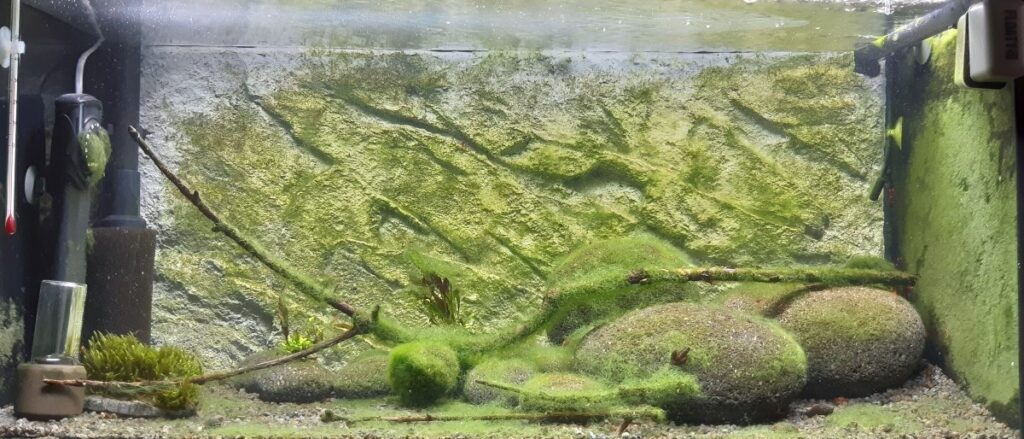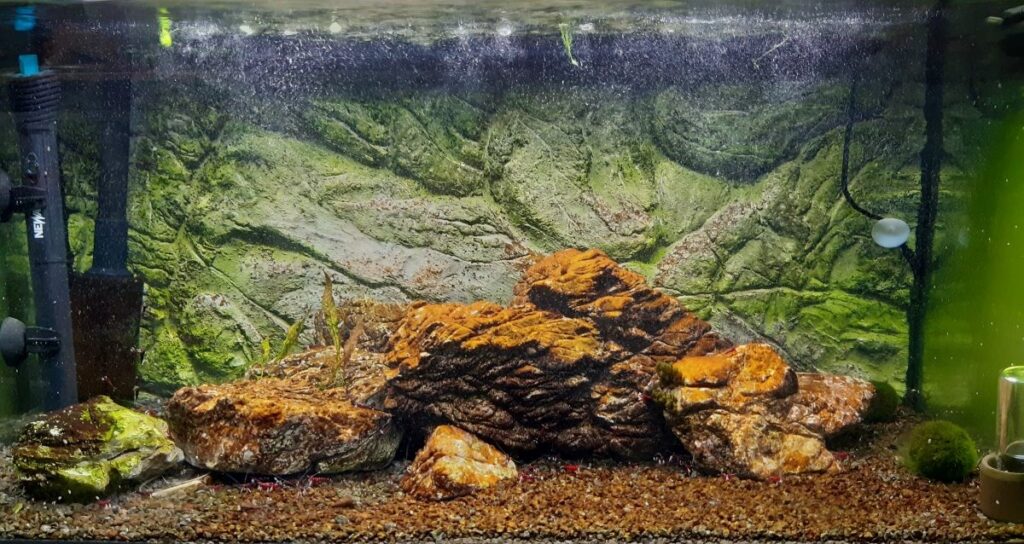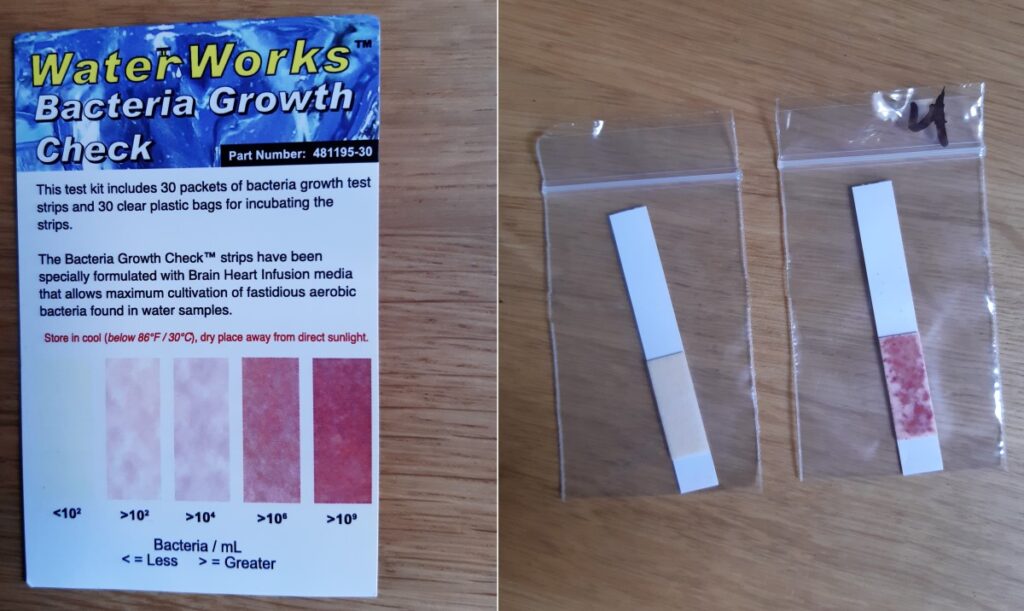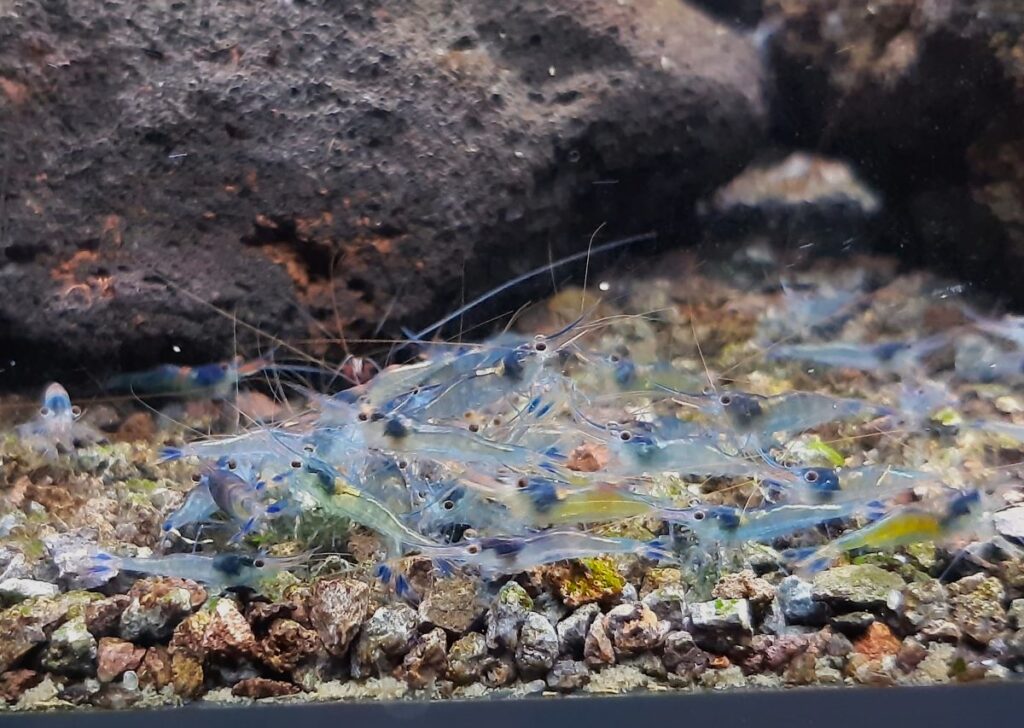With this short writing I want to share my experiences with keeping Sulawesi shrimps. After a 30-year hobby of keeping and breeding lizards I switched to wet tanks about four years ago. I have been keeping Sulawesi shrimp since early 2021 and I intend to focus on these shrimps in the future.
- I keep and breed (one species better than others) Caridina dennerli, C. caerulea (blue form), C. spinata, C. poso and C. sp. Malili red
I currently have 6 Sulawesi tanks measuring approximately 60x30x30cm. They are all handled in the same way at the same time.

Equipment of each aquarium:
- 1x 100W Dennerle Nano Heater (not recommended as I've already had 3 broken on 7 in use)
- Thermostat for safety to prevent overheating
- External filter Eheim Experience 150
- Fluval UVC In-Line Clarifier 3W
- Aquatlantis Easy Led + controller (8 to 21 hrs. I reduce the intensity of the light a bit if there are too many algae.)
- Small Söchting oxydator
Water parameters:
- Temperature: 28°C
- Conductivity: approx. 300µS/cm
- pH 8.00 to 8.20 depending on the time of the day
- KH: 4°
- GH: 4°
- No nitrate, nitrite, phosphate.

Minerals I use:
- Salty Shrimp Sulawesi Mineral 8.5
- Prism Shrimp Minerals – Rock Flour Sula
- Alxyon Specialized Towuti (liquid)
I use the salts according to the instructions, but I usually weigh them (3g/20l). A “scoop per 20l” according to the instructions is less than 3g.
By changing every week the minerals I use, I have a mix of 33% Salty Shrimp, 33% Prism and 33% Alxyon in my tanks.
I do this because of two reasons:
- I don’t know which minerals are used by the breeder of my next purchase. That way I have the best chance of having something comparable.
- It minimizes the possible negative aspects of one mineral mixture.
At the other hand using different salts also reduces the positive effects of the best mixture.

Substrate:
I am testing different types of substrates now going from very fine sand of JBL, 1-3mm basalt split from Amazon, 2-5mm volcanic from Alxyon and 16-31mm basalt. I already found out that you must use the thinnest layer possible to avoid detritus build-up. By testing different substrates, I want to look which ones are the easiest to clean and/ or to replace when necessary.
Stones:
I use porous lava, basalt boulders, seiryu and ryuoh in different tanks. My impression is that seiryu and ryuoh stones grow algae and biofilm the best.
Leaves:
Currently, I only use a small amount (1/5 of a sheet per aquarium) of fig (Ficus carica) and walnut (Juglans regia) from time to time. Shrimps prefer green leaves, not brown. My impression is that fig leaves grow a large amount of biofilm fast. They are quickly eaten before they fall apart.

Water change:
10% weekly. I just mix the mineral powder in RO water of approximately 28°C and gently pour it into the aquarium. I haven't noticed any negative effects from it. The water becomes clear again in half a day. I tried dissolving it by adding CO2 without success.
Ostracods:
Sometimes I have problems with too many ostracods. It comes and goes. I catch them with planaria traps (the plastic ones from Hobby – Planaria X) with spirulina tabs as bait. It works reasonably well but not all ostracods are caught. I'm still testing other types of bait they can't resist.
Food:
Lots of different stuff, but always in powder form (I grind the pellets with an electric coffee grinder). I take approximately 1ml of powdered food (usually 50% Bacter AE and 50% something else like spirulina), mix it with about 50ml of water and let it soak for 5 minutes. I divide this mixture with a syringe into 5 aquariums according to the number of shrimps in it. I use this 1ml of powder for a total of about 500 shrimps. I feed every 2 or 3 days. I mix it with water first, because the dry powder floats on the surface of the aquarium for a very long time and the shrimps don't eat it that way.
I also tried the GlasGarten Crispy Caves. "Caves" do not disintegrate fast in water and are a source of food for several weeks. But I would only use them when you have enough shrimps in your tank.

Housing different species together?
I'm not sure yet. I do mix 2 species in one tank at the moment because I don't have enough aquariums to keep them separate. My experience with insects in the past is that when you keep different species together, one usually takes over and you lose the other. But my experience with shrimps is too limited. My intention is to separate them again when I have extra aquariums.
Currently I am testing the presence of Neocaridina with the Sulawesi's. The Neocaridina are less shy and I have the impression that this makes that the Sula's also are less shy.
Number of shrimps in the tank
I think it is better to have high density of shrimps. In my 60cm/50l tanks they become less shy when there are about 100 shrimps or more. Even if they are newly introduced.
Cycling new tanks for a couple of weeks or months without shrimps?
I think it is important to have some biofilm in the aquarium before you put shrimps in. In some tanks I have biofilm after a couple of weeks, in other nothing grows there for a year. Not sure why. In new tanks I try to speed up algae / biofilm growth by adding fertilizer (up to 100ppm nitrate). Without shrimp of course. In tanks with an evident layer of biofilm, my shrimps grow well. In tanks without the biofilm, they don't.
Lessons learned:
- I have noticed that breeding stops in tanks with high bacteria counts. I purchased test strips on Amazon to verify. Tanks with very low bacterial counts have high reproduction rates. I installed UVC purifiers in all my tanks.

- During the first weeks after starting the tank, the pH changes a lot during the day.
- In tanks with a lot of biofilm / algae (I did not check what it actually is) the shrimps do better. As a test, I started 2 new tanks with a nutrient concentration of 100ppm nitrate. In a couple of weeks a nice layer of biofilm/ algae is formed. I do large water changes in these tanks to get the parameters right in a couple of months.
- In tanks with few bacteria and a nice biofilm, reproduction can be high. In August 2021 I restarted 2 tanks. I added shrimps in November. After 6 months 20 Caridina dennerli reproduced to about 300, 10 Caridina spinata to about 100. In August 2022 both tanks crashed.
- After a one year period I had a serious crash in 2 of my tanks and I lost about 90% of my C. dennerli and spinata. The only reason I can think of is a build-up of detritus in my substrate. Even with a layer of only 5 to 10mm I could vacuum (I never did this before) loads of detritus. I believe that the crash was announced by the presence of loads of ostracods and long, thin detritus worms. Now, 2 months later breeding starts again. And almost no more ostracods and detritus worms.

Note: I’m not a researcher and my time and resources are limited, so my conclusions are not 100% correct and complete and are subject to improvement. But they give an idea what might be important.
Peter Baert


